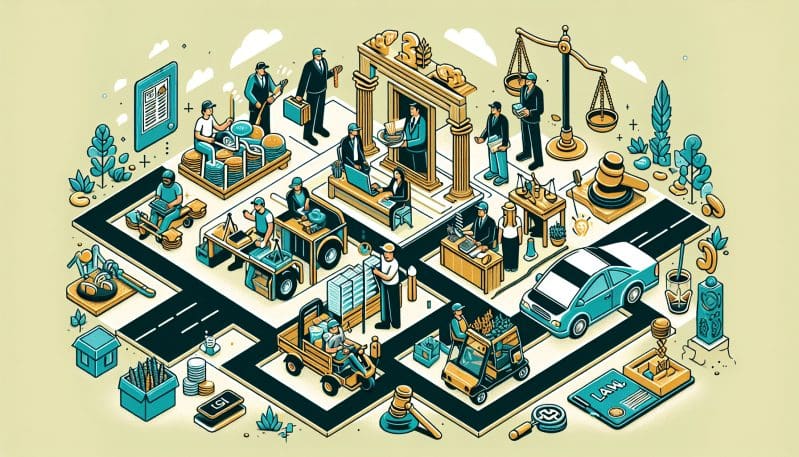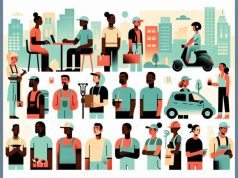In the bustling heart of the modern workforce, a new player has emerged—flexible, dynamic, and ever-expanding—the gig economy. A phenomenon that’s reshaping the contours of employment as we know it. In New York, the city that never sleeps, the gig economy is more than a labor trend; it’s a vibrant part of the urban tapestry, where countless individuals hustle to the rhythm of on-demand work.
As an Employee Rights Activist deeply embedded in the warp and weft of worker advocacy, I’ve seen firsthand the seismic shifts in labor dynamics. Today, with convenience at the fingertips of consumers, a vast network of independent contractors provides services ranging from ride-sharing to food delivery, from freelance coding to on-call consulting. This brave new world of employment has given rise to flexible work hours and entrepreneurial opportunities but has also left many workers adrift in uncharted legal waters.
Gig workers find themselves in a precarious position, often deprived of the safeguards that traditional employment offers. Where once the security of a steady paycheck, health insurance, and retirement plans were the norm, now many gig workers face an uncertain future, devoid of these fundamental benefits. In New York, a city that prides itself on its robust labor laws, the gig economy has tested the very fabric of employment protection.
The current legal framework for gig workers is a patchwork of policies, often lacking in comprehensive coverage. While traditional employees are entitled to a minimum wage, overtime pay, unemployment insurance, and workers’ compensation, gig workers are routinely classified as independent contractors, which exempts employers from providing these benefits.
However, the tide may be turning. In recent years, there have been concerted efforts to extend worker protections to include those in the gig economy. For instance, New York City’s groundbreaking move to set a minimum pay rate for ride-hailing service drivers serves as a beacon of progress, potentially setting a precedent for other sectors within the gig economy.
The disparity between traditional and gig work could not be more stark. On one side, there is the stability and protection that comes with traditional employment; on the other, the freedom and flexibility of gig work—but at what cost? As the gig economy burgeons, so does the potential for exploitation without the strictures of comprehensive labor laws.
Personal stories of gig workers often reveal the human cost behind the convenience they provide. Take Maria, a food delivery worker who juggles multiple apps to make ends meet, with no sick leave or health insurance to fall back on. Or John, a freelance graphic designer who finds the uncertainty of gig work both exhilarating and anxiety-inducing, as he navigates the volatile waters of client-based income without a safety net.
The future of work hinges on our ability to reconcile the freedoms of gig work with the protection that employment law offers. Experts suggest a middle path—an evolving legal framework that takes into account the unique nature of gig work while ensuring that fundamental worker rights are not sidelined in the process.
In conclusion, as we stand at the cusp of a new era in labor, it is imperative to forge a path that upholds the dignity of work, regardless of its form. By listening to the stories of gig workers and engaging in informed dialogue, we can work towards legislation that protects those powering the gig economy, ensuring that they too can share in the promise of our ever-evolving work landscape. The journey has begun, and the destination is clear—a future where flexibility does not come at the cost of fairness, and where the economy works for all.




























